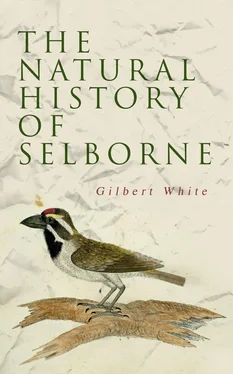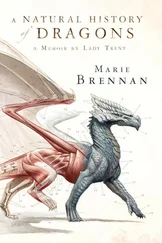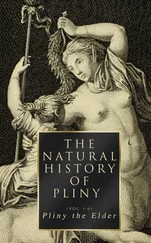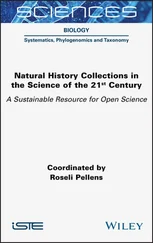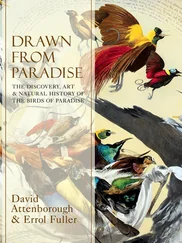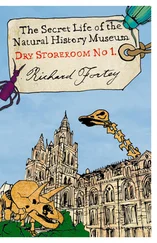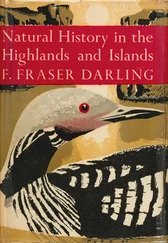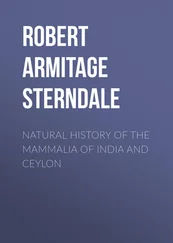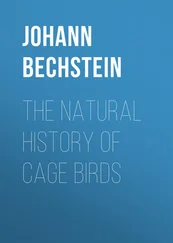Gilbert White - The Natural History of Selborne
Здесь есть возможность читать онлайн «Gilbert White - The Natural History of Selborne» — ознакомительный отрывок электронной книги совершенно бесплатно, а после прочтения отрывка купить полную версию. В некоторых случаях можно слушать аудио, скачать через торрент в формате fb2 и присутствует краткое содержание. Жанр: unrecognised, на английском языке. Описание произведения, (предисловие) а так же отзывы посетителей доступны на портале библиотеки ЛибКат.
- Название:The Natural History of Selborne
- Автор:
- Жанр:
- Год:неизвестен
- ISBN:нет данных
- Рейтинг книги:4 / 5. Голосов: 1
-
Избранное:Добавить в избранное
- Отзывы:
-
Ваша оценка:
- 80
- 1
- 2
- 3
- 4
- 5
The Natural History of Selborne: краткое содержание, описание и аннотация
Предлагаем к чтению аннотацию, описание, краткое содержание или предисловие (зависит от того, что написал сам автор книги «The Natural History of Selborne»). Если вы не нашли необходимую информацию о книге — напишите в комментариях, мы постараемся отыскать её.
The Natural History of Selborne — читать онлайн ознакомительный отрывок
Ниже представлен текст книги, разбитый по страницам. Система сохранения места последней прочитанной страницы, позволяет с удобством читать онлайн бесплатно книгу «The Natural History of Selborne», без необходимости каждый раз заново искать на чём Вы остановились. Поставьте закладку, и сможете в любой момент перейти на страницу, на которой закончили чтение.
Интервал:
Закладка:
I must not omit to tell you (as you have been so lately on the study of reptiles) that my people, every now and then of late, draw up with a bucket of water from my well, which is sixty-three feet deep, a large black warty lizard with a fin-tail and yellow belly. How they first came down at that depth, and how they were ever to have got out thence without help, is more than I am able to say.
My thanks are due to you for your trouble and care in the examination of a buck’s head. As far as your discoveries reach at present, they seem much to corroborate my suspicions; and I hope Mr. --- may find reason to give his decision in my favour; and then, I think, we may advance this extraordinary provision of nature as a new instance of the wisdom of God in the creation.
As yet I have not quite done with my history of the œdicnemus , or stone-curlew; for I shall desire a gentleman in Sussex (near whose house these birds congregate in vast flocks in the autumn) to observe nicely when they leave him (if they do leave him), and when they return again in the spring: I was with this gentleman lately, and saw several single birds.
LETTER XXI.
Table of Contents
Selborne, Nov. 28th , 1768.
Dear Sir—With regard to the œdicnemus , or stone-curlew, I intend to write very soon to my friend near Chichester, in whose neighbourhood these birds seem most to abound, and shall urge him to take particular notice when they begin to congregate, and afterwards to watch them most narrowly whether they do not withdraw themselves during the dead of the winter. When I have obtained information with respect to this circumstance, I shall have finished my history of the stone-curlew, which I hope will prove to your satisfaction, as it will be, I trust, very near the truth. This gentleman, as he occupies a large farm of his own, and is abroad early and late, will be a very proper spy upon the motions of these birds; and besides, as I have prevailed on him to buy the Naturalist’s Journal (with which he is much delighted), I shall expect that he will be very exact in his dates. It is very extraordinary, as you observe, that a bird so common with us should never struggle to you.
And here will be the properest place to mention, while I think of it, an anecdote which the above-mentioned gentleman told me when I was last at his house; which was that, in a warren joining to his outlet, many daws ( corvi monedulœ ) build every year in the rabbit-burrows under ground. The way he and his brothers used to take their nests, while they were boys, was by listening at the mouths of the holes, and, if they heard the young ones cry, they twisted the nest out with a forked stick. Some water-fowls (viz., the puffins) breed, I know, in that manner; but I should never have suspected the daws of building in holes on the flat ground.
Another very unlikely spot is made use of by daws as a place to breed in, and that is Stonehenge. These birds deposit their nests in the interstices between the upright and the impost stones of that amazing work of antiquity; which circumstance alone speaks the prodigious height of the upright stones, that they should be tall enough to secure those nests from the annoyance of shepherd-boys, who are always idling round that place.
One of my neighbours last Saturday, November 26th, saw a martin in a sheltered bottom: the sun shone warm, and the bird was hawking briskly after flies. I am now perfectly satisfied that they do not all leave this island in the winter.
You judge very right, I think, in speaking with reserve and caution concerning the cures done by toads; for, let people advance what they will on such subjects, yet there is such a propensity in mankind towards deceiving and being deceived, that one cannot safely relate anything from common report, especially in print, without expressing some degree of doubt and suspicion.
Your approbation with regard to my new discovery of the migration of the ring-ousel gives me satisfaction; and I find you concur with me in suspecting that they are foreign birds which visit us. You will be sure, I hope, not to omit to make inquiry whether your ring-ousels leave your rocks in the autumn. What puzzles me most is the very short stay they make with us, for in about three weeks they are all gone. I shall be very curious to remark whether they will call on us at their return in the spring, as they did last year.
I want to be better informed with regard to ichthyology. If fortune had settled me near the seaside, or near some great river, my natural propensity would soon have urged me to have made myself acquainted with their productions; but as I have lived mostly in inland parts, and in an upland district, my knowledge of fishes extends little farther than to those common sorts which our brooks and lakes produce.
I am, etc.
LETTER XXII.
Table of Contents
Selborne, Jan. 2nd , 1769.
Dear Sir—As to the peculiarity of jackdaws building with us under the ground in rabbit-burrows, you have, in part, hit upon the reason; for, in reality, there are hardly any towers or steeples in all this county. And perhaps, Norfolk excepted, Hampshire and Sussex are as meanly furnished with churches as almost any counties in the kingdom. We have many livings of two or three hundred pounds a year, whose houses of worship make little better appearance than dovecots. When I first saw Northamptonshire, Cambridgeshire, and Huntingdonshire, and the fens of Lincolnshire, I was amazed at the number of spires which presented themselves in every point of view. As an admirer of prospects, I have reason to lament this want in my own county; for such objects are very necessary ingredients in an elegant landscape.
What you mention with respect to reclaimed toads raises my curiosity. An ancient author, though no naturalist, has well remarked that “every kind of beasts, and of birds, and of serpents, and things in the sea, is tamed, and hath been tamed, of mankind.”
It is a satisfaction to me to find that a green lizard has actually been procured for you in Devonshire, because it corroborates my discovery, which I made many years ago, of the same sort, on a sunny sandbank near Farnham, in Surrey. I am well acquainted with the South Hams of Devonshire, and can suppose that district, from its southerly situation, to be a proper habitation for such animals in their best colours.
Since the ring-ousels of your vast mountains do certainly not forsake them against winter, our suspicions that those which visit this neighbourhood about Michaelmas are not English birds, but driven from the more northern parts of Europe by the frosts, are still more reasonable; and it will be worth your pains to endeavour to trace from whence they come, and to inquire why they make so very short a stay.
In your account of your error with regard to the two species of herons, you incidentally gave me great entertainment in your description of the heronry at Cressi Hall, which is a curiosity I never could manage to see. Fourscore nests of such a bird on one tree is a rarity which I would ride half as many miles to have a sight of. Pray be sure to tell me in your next whose seat Cressi Hall is, and near what town it lies. I have often thought that those vast extents of fens have never been sufficiently explored. If half a dozen gentlemen, furnished with a good strength of water-spaniels, were to beat them over for a week, they would certainly find more species.
There is no bird, I believe, whose manners I have studied more than that of the caprimulgus (the goat-sucker), as it is a wonderful and curious creature; but I have always found that though sometimes it may chatter as it flies, as I know it does, yet in general it utters its jarring note sitting on a bough; and I have for many a half hour watched it as it sat with its under mandible quivering, and particularly this summer. It perches usually on a bare twig, with its head lower than its tail, in an attitude well expressed by your draughtsman in the folio “British Zoology.” This bird is most punctual in beginning its song exactly at the close of day—so exactly that I have known it strike up more than once or twice just at the report of the Portsmouth evening gun, which we can hear when the weather is still. It appears to me past all doubt that its notes are formed by organic impulse, by the powers of the parts of its windpipe formed for sound, just as cats purr. You will credit me, I hope, when I assure you that, as my neighbours were assembled in an hermitage on the side of a steep hill where we drink tea, one of these churn-owls came and settled on the cross of that little straw edifice and began to chatter, and continued his note for many minutes: and we were all struck with wonder to find that the organs of that little animal, when put in motion, gave a sensible vibration to the whole building! This bird also sometimes makes a small squeak, repeated four or five times; and I have observed that to happen when the cock has been pursuing the hen in a toying way through the boughs of a tree.
Читать дальшеИнтервал:
Закладка:
Похожие книги на «The Natural History of Selborne»
Представляем Вашему вниманию похожие книги на «The Natural History of Selborne» списком для выбора. Мы отобрали схожую по названию и смыслу литературу в надежде предоставить читателям больше вариантов отыскать новые, интересные, ещё непрочитанные произведения.
Обсуждение, отзывы о книге «The Natural History of Selborne» и просто собственные мнения читателей. Оставьте ваши комментарии, напишите, что Вы думаете о произведении, его смысле или главных героях. Укажите что конкретно понравилось, а что нет, и почему Вы так считаете.
